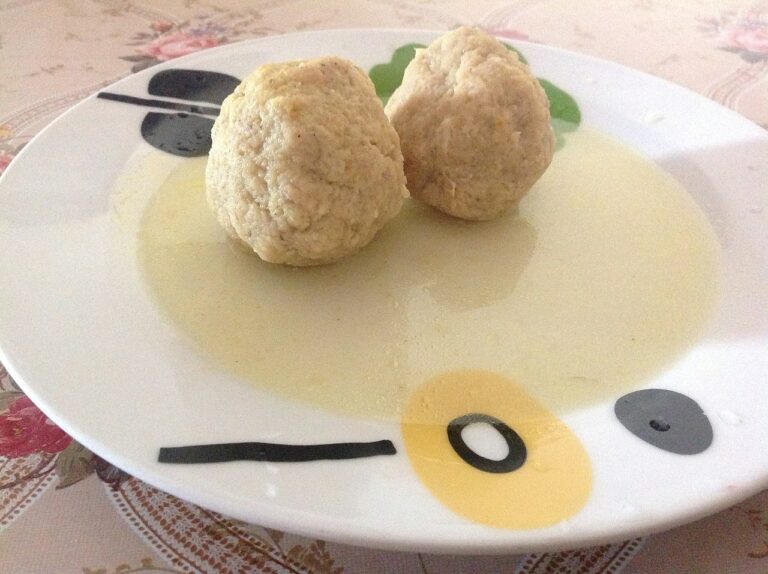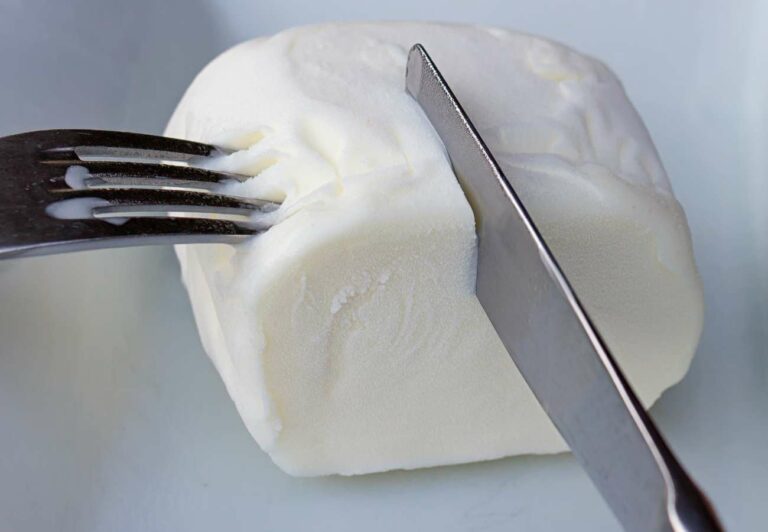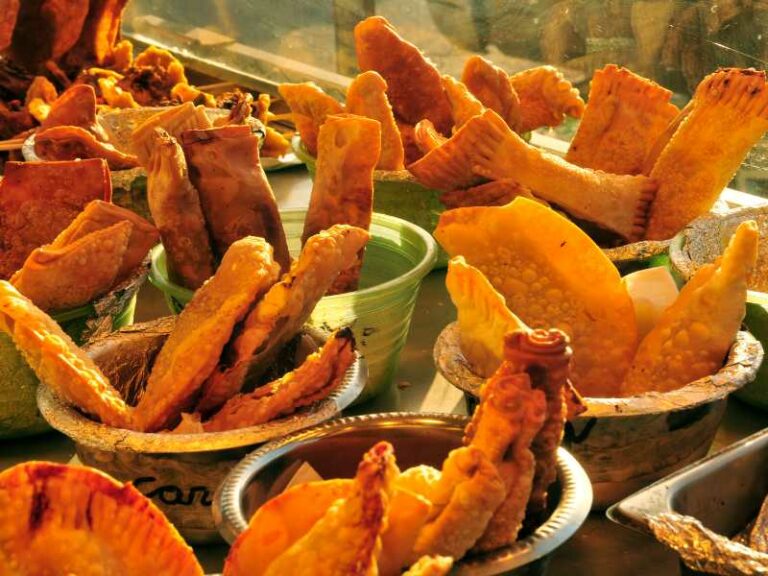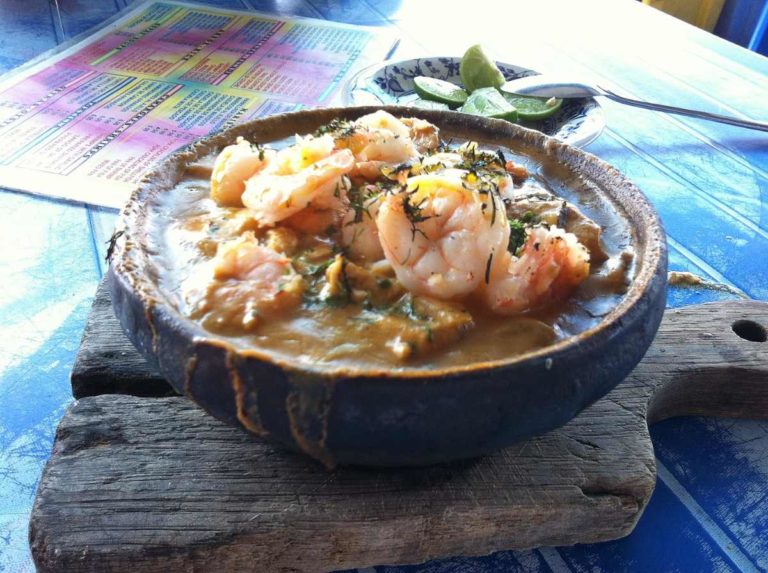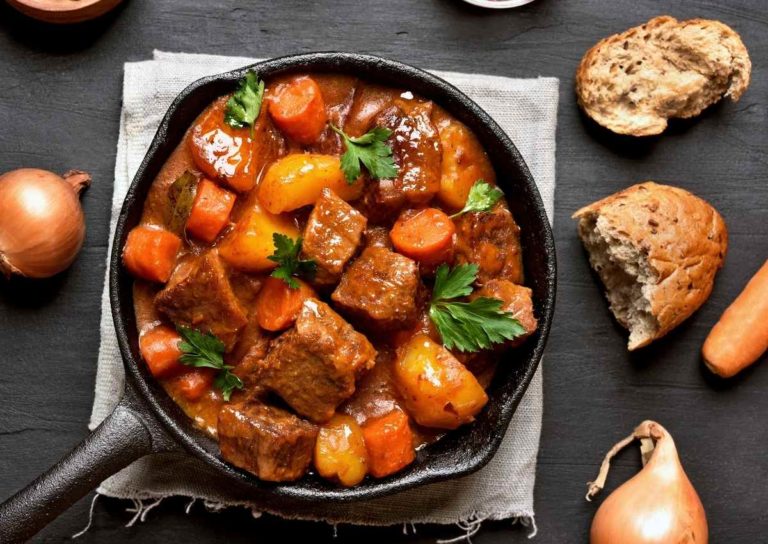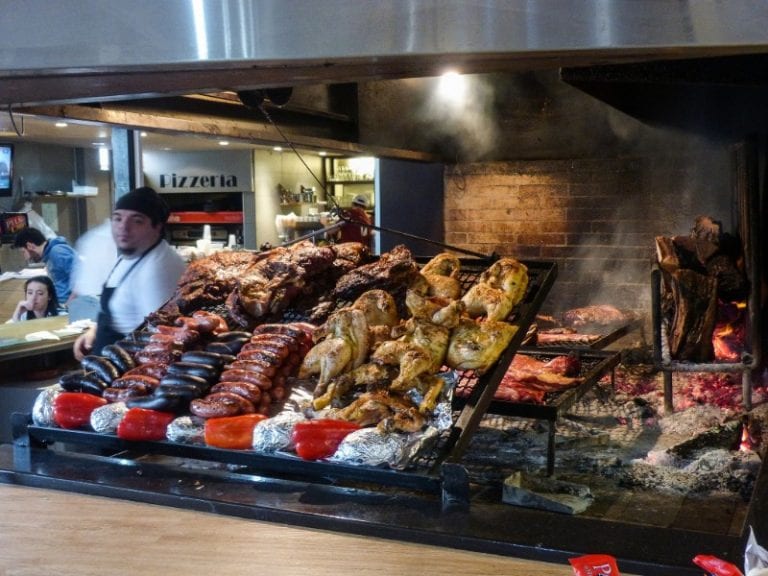Egyptian Food: 33 Traditional Dishes of Egypt
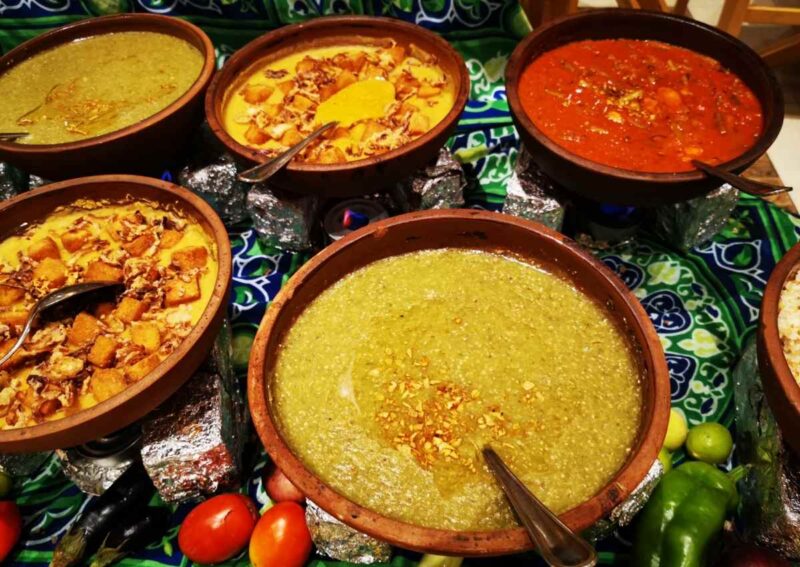
Egyptian food sets a precedent for much of the Middle East and is home to some bountiful regional culinary delights that have to be tried.
Typically, Egyptian food combines vegetables, beans, legume, lentils, onions, pasta, rice and cumin with Mediterranean influences. All notable characteristics of Egypt’s mouth-watering national dishes.
Meat in Egypt is often quite expensive so is rarely used in Egyptian cooking, although some of the more coastal regions do utilise fish and seafood in their dishes.
There are variations of dishes and flavours in Egyptian food depending on the region, although some dishes are revered throughout.
Egyptian bread (Aish) is often a common side and is sometimes used in place of utensils. Furthermore, Egyptian cuisine is characterised by a range of delicious spices that made their way to North Africa via the spice routes. Spices commonly used in cooking include cumin, chili, cardamom, coriander and parsley, among others.
Whilst meat isn’t particularly common in Egyptian cooking, when they do use meat they will often go for lamb or beef for grilling, and chicken, duck or rabbit for soups, broths and stews.
The Islamic faith can help shape a country’s cuisine and so similarities can be found in dishes other Islamic countries around the world such as Bangladesh, Pakistan or Indonesia for example.
Ful Medames
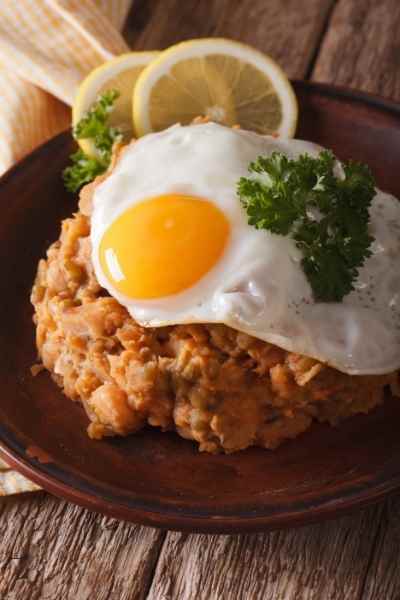
Ful medames (also known as Ful mudammas) is a popular breakfast dish most notably in bigger cities such as Cairo. it is also eaten at other times of the day and throughout more rural parts of Egypt.
Often shortened to ‘ful’, it is a staple dish of Egypt and, in fact, much of the Middle East including countries such as Ethiopia, Iraq, Djibouti, Lebanon, Syria, Saudi Arabia and Israel.
There are many variations of Ful medames, but it is typically made by using cooked fava beans (sometimes mashed into a paste), with olive oil, spiced with cumin, onion, garlic, lemon and chili, and served with bread, vegetables and sometimes hard boiled eggs or tahina.
You can find Ful medames throughout the country, either in restaurants (sometimes served as a mezze) or in the atmospheric Egyptian food markets you find in every town and city.
Koshary/Koshari
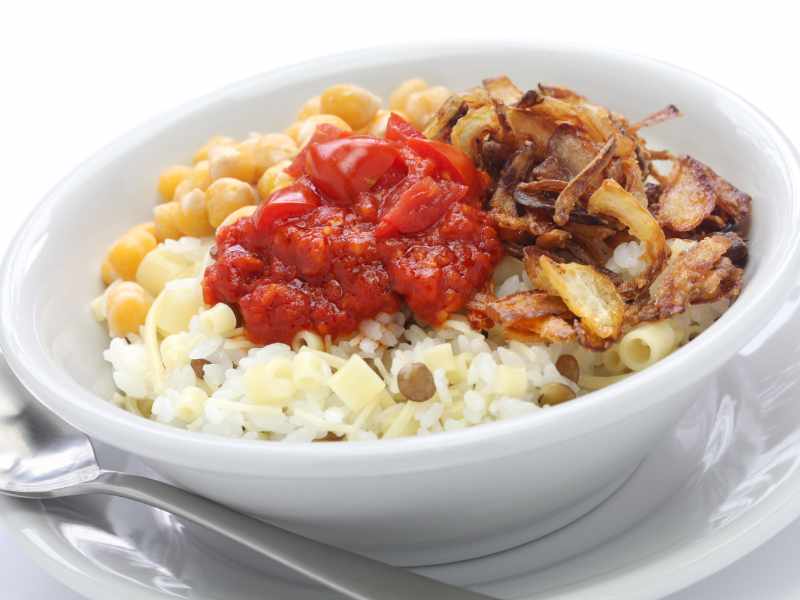
Often considered to be Egypt’s national dish, Koshary has a rich history dating back to its first origins in India in the 19th century.
When the British ruled India, the story goes, they embraced Koshary as a delicious, filling, inexpensive meal, which they then brought over to Egypt in the late 1800s. Egyptians adopted Koshary as their own, evolving it over time, making the dish a staple of every household, restaurant and street-food vendor across the country.
The ingredients are somewhat of an unusual combination, mixing lentils, macaroni noodles and rice with a spicy tomato sauce made with garlic, fried onions, garbanzo beans and a special Middle Eastern spice blend called Baharat, garnished with chickpeas.
The tomato sauce is particularly noteworthy in Koshary, adding depth and flavour with a spicy kick that is synonymous with Egyptian cooking.
As with most Egyptian food, Koshary is vegetarian and can be considered vegan so long as the food is fried in vegetable oil. It’s not difficult to find Koshary in Egypt if you’re ever visiting, and it’s suitable for most diets.
Besarah/Bissara/Bessara
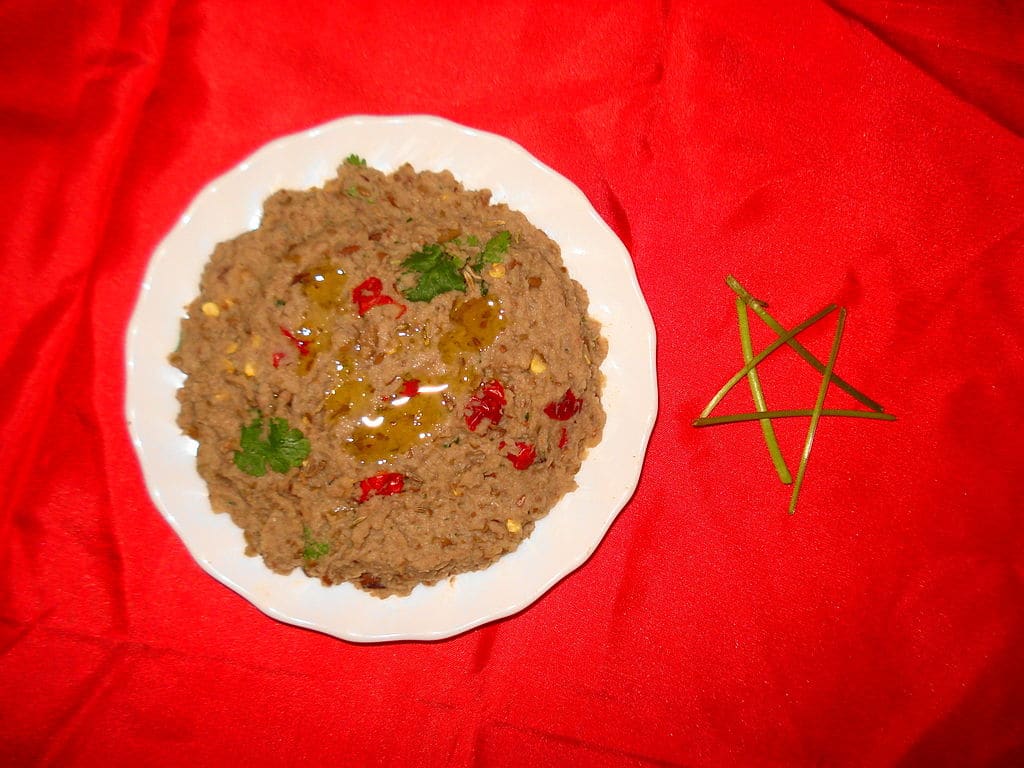
Besarah is a simple fava bean dip made with onions, garlic, herbs and, of course, split fava beans. Served either hot or cold, Besarah is typically eaten with pieces of pita bread, often as a breakfast dish.
Bamya (Okra Stew)
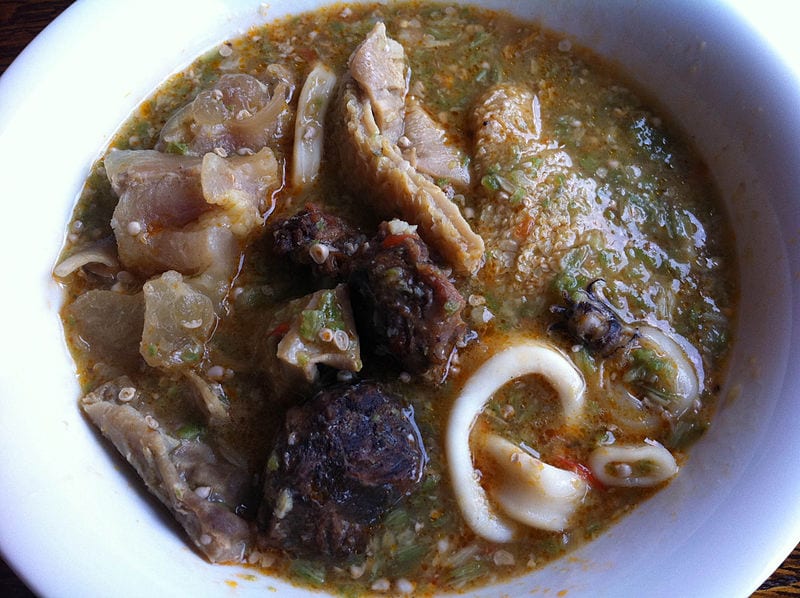
Okra soup is a quick and easy recipe that is healthy and filling, it’s definitely the understated mainstay of Egyptian household cooking. Okra is the main ingredient and is prepared using the green seed pods of the plant, giving the dish its green colour.
It is made by combining chunks of meat (usually beef or lamb) with tomatoes, okra, onions, vegetable oil, onion, garlic, cajun and coriander.
Chicken or lamb can also be used in Okra stew; the recipe has evolved throughout regions of Africa and the Middle East, and you can find variations on it wherever you travel.
Shawarma
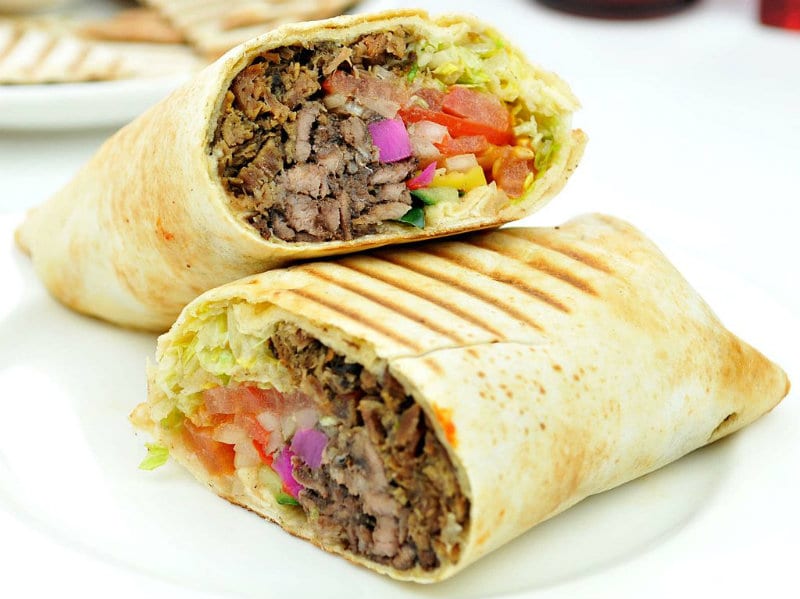
Shawarma is popular across Arabic speaking regions, originating from the doner kebab which is associated with Turkey.
Shawarma uses a vertical spit to grill seasoned meat for a long period of time, commonly a whole day.
A variety of meats are used, including chicken, lamb, beef, turkey, or a mixture of meats, which are seasoned before cooking with a variety of spices such as turmeric, cloves, cinnamon and cardamom.
Meat is shaved off the split and served in a pita or a flatbread with lettuce, onions, tomatoes and sauces such as hummus, tahini or pickled mangos.
Shawarmas are also eaten across the western world, served as fast food, but an authentic shawarma will focus more on Middle-Eastern flavours and spices, and so a real shawarma is best experienced in Egypt or the Middle East.
Macaroni Béchamel

Macaroni Béchamel or “Egyptian baked pasta” is essentially the Egyptian version of a lasagne!
A spicy ground beef ragu mixture is made and combined in a baking dish with penne pasta (instead of lasagne sheets) with béchamel sauce. It is then baked until golden and portioned out before being served.
Ta’meya (Falafel)
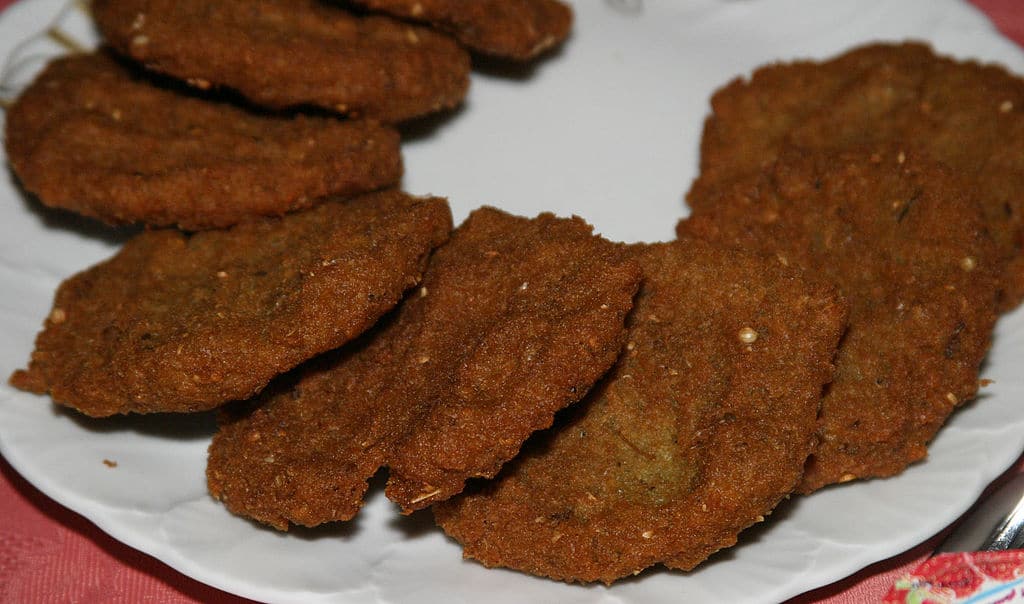
Ta’meya is a classic Egyptian street food, known throughout the world as falafel. The major difference between a Ta’meya and a falafel is that it is not made with ground chickpeas but dried fava beans instead, a very popular ingredient used in Egyptian cuisine.
Hamine
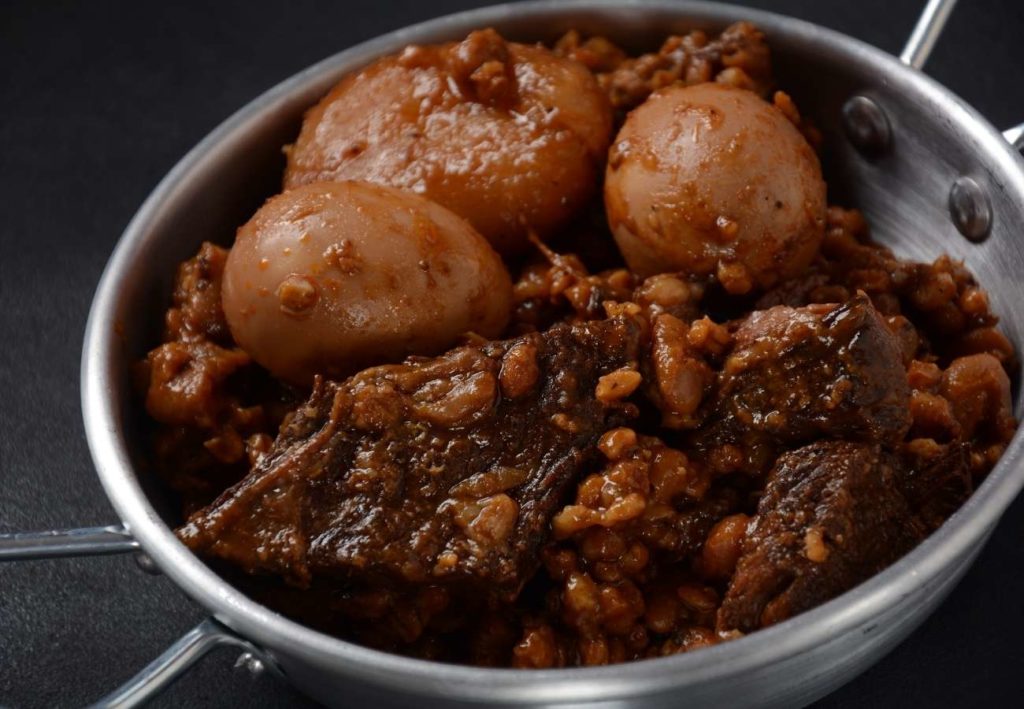
Hamine, also known as beid hamine or beid haouzi in Egypt, are long-simmered eggs that belong to the Sephardic Jewish cuisine. The eggs are allowed to simmer gradually in their broth till they attain a browned flavour. Unlike traditional hard-boiled eggs that are a little rubbery and dry, hamine eggs are soft and creamy in texture.
Mahshi
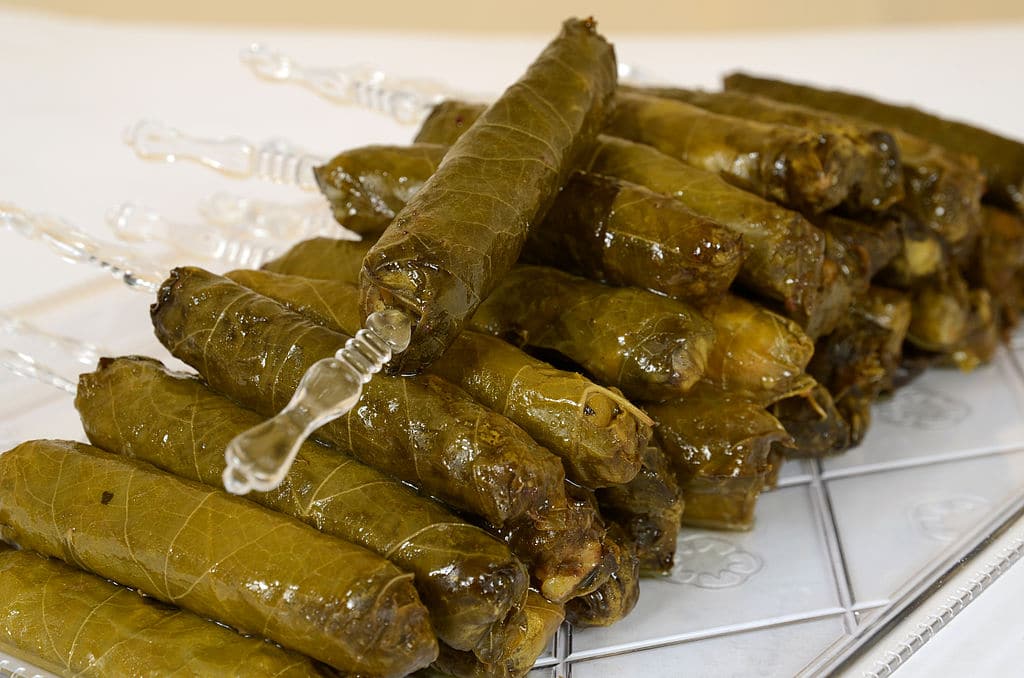
Mahshi is essentially vegetables stuffed with a rice and mince beef mixture in a tomato and cumin sauce, served on a platter. Typical vegetables that are stuffed include squash, anaheim peppers, eggplant, tomatoes but often the filling is stuffed into grape leaves, as shown in the picture.
Mahshi is also enjoyed in Lebanon and Cyprus.
Kebab
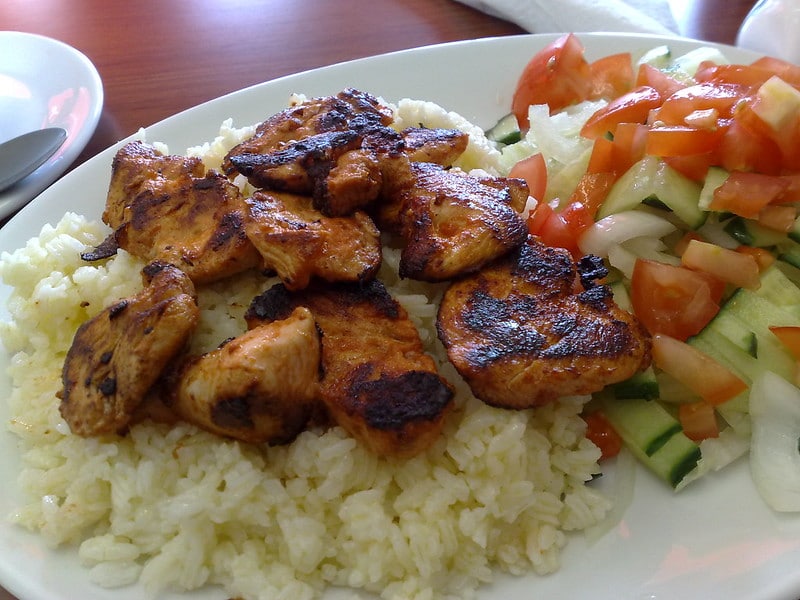
Egyptian kebabs differ slightly from Turkish kebabs in that they often include curry powder, turmeric, mustard and cardamom, some of the spices that really epitomise Egyptian cooking!
Chicken is the most popular kebab meat, marinated and grilled on a skewer, served with a garnish of tomato, green pepper and fresh mint.
Om Ali/Umm Ali
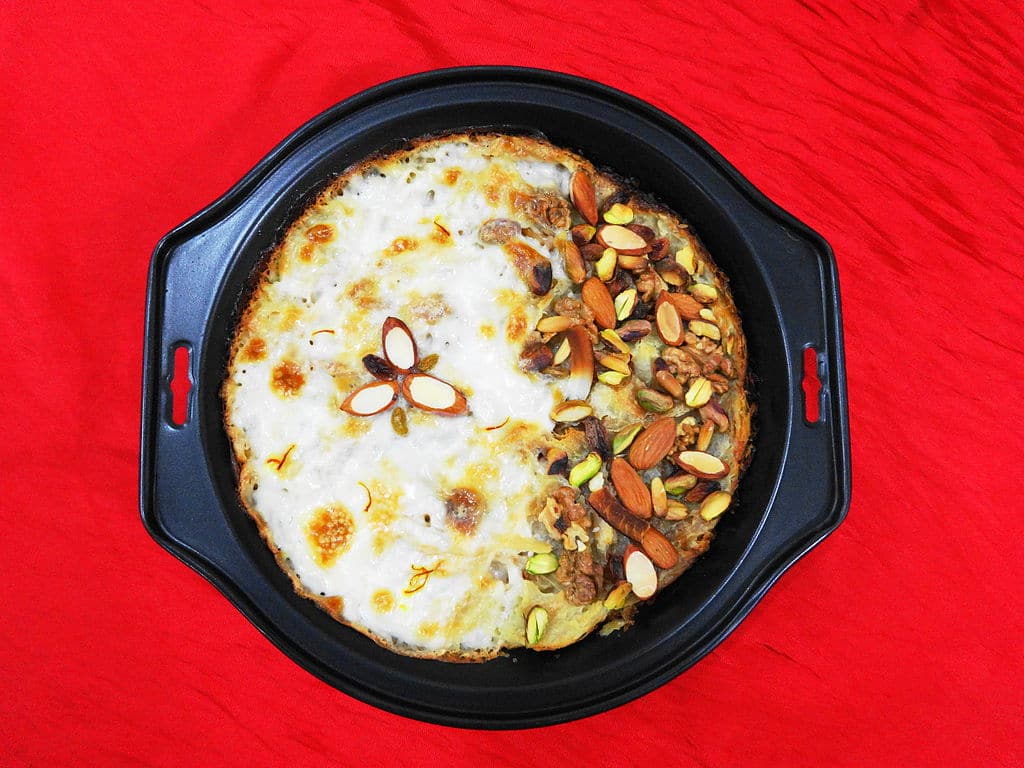
Om Ali (or Umm Ali) is considered the national dessert of Egypt. A little similar to the bread pudding, Om Ali is made with pastry, raisins, pistachios and coconut. It is then soaked in milk, cream and sugar.
Sobia
Sobia is a traditional beverage made from raw rice. The other ingredients are coconut milk, water, sugar and sometimes spices like cinnamon and nutmeg or vanilla. It is prepared by blending the ingredients and straining to remove any coarse pieces and is typically served cold.
Feseekh
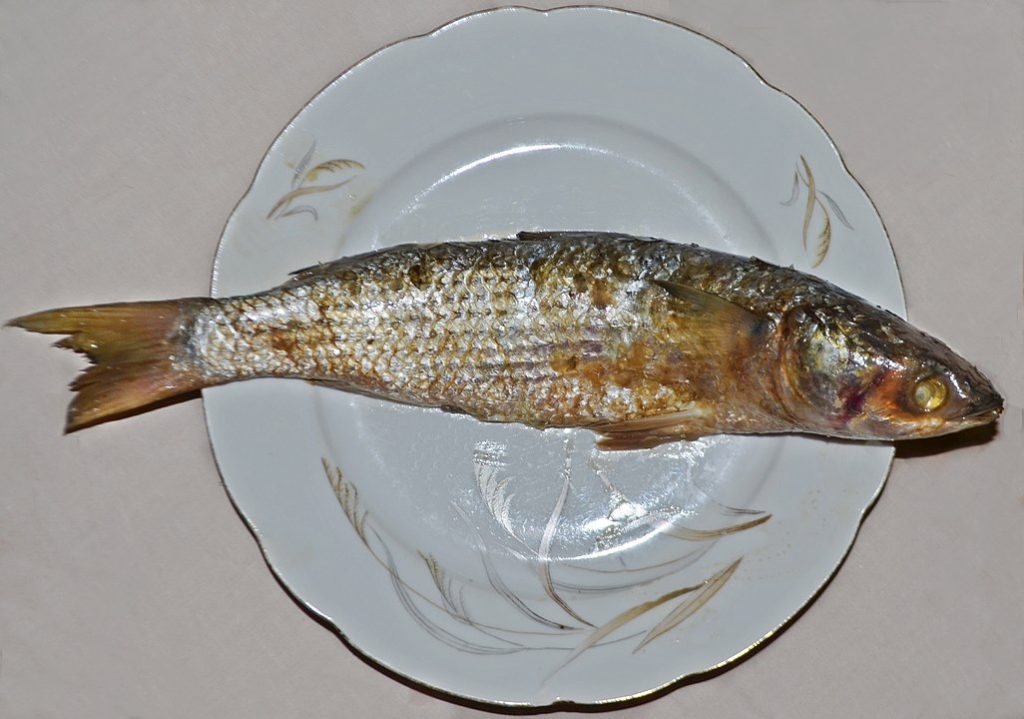
Feseekh is the most interesting food on this list because, if it’s not prepared correctly, it can cause poisoning and death! Traditionally eaten during the Sham el-Nessim festival (a Spring celebration), feseekh is a fermented fish with one hell of an odour.
Camel Burgers
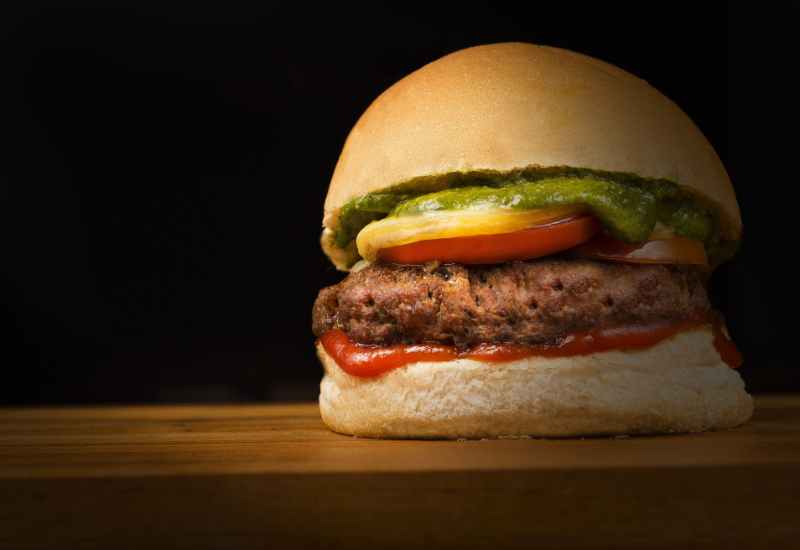
Camel burgers are, quite simply, burgers made from camel meat – most popular in countries where there is a large population of camels.
The meat from the hump is considered to be the most delicious but all of the meat is quite lean, rich in protein and contains less cholesterol than other red meats. The taste is comparable to beef with a slightly more sweet aftertaste.
Roz Bel Laban
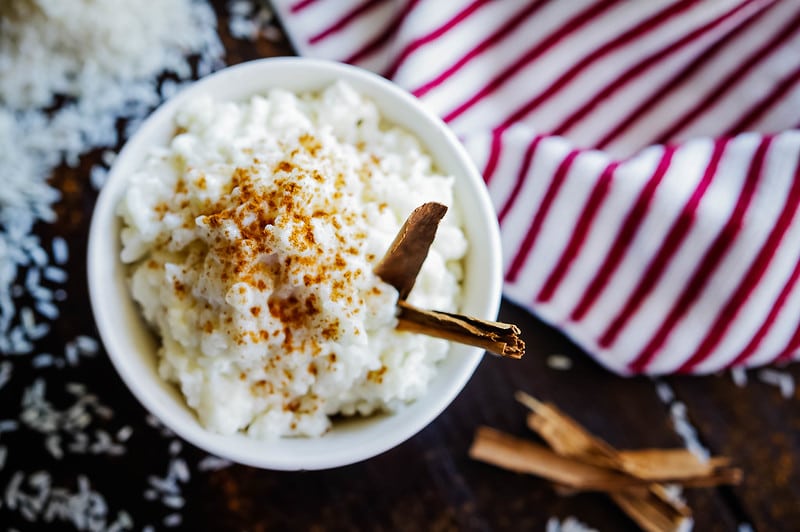
Roz Bel Laban is a Middle Eastern rice pudding with a coconut and vanilla flavor. A fairly simple dessert dish but widely enjoyed throughout Egypt.
Fattah
Fattah is quite a simple dish consisting predominantly of meat (either lamb or beef) with rice and a tomato sauce. Fattah is often served at Eid to mark the end of Ramadan and contains many of the typical Egyptian spices you would expect; cardamom, cumin and garlic.
Sahlab/Salep

Sahlab is a sweet milk dessert that’s also popular outside of Egypt, across the Middle East. It is considered a hearty, comforting drink and is made with warm milk, corn starch and sugar or honey. Additional ingredients are added based on region or preference such as pistachios, cinnamo, nutmeg or cream.
Foie Gras
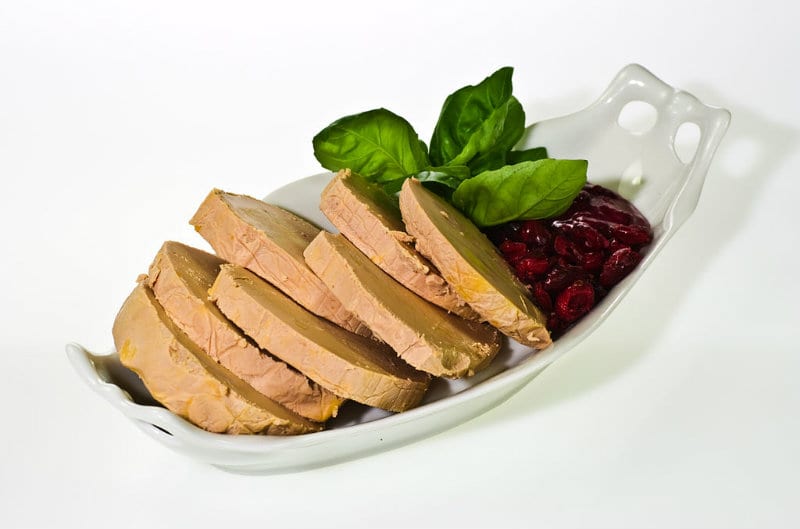
Whilst mostly associated with France, Foie gras was actually first practiced in Ancient Egypt, going back as far as 2,500 BC.
Foie gras refers to the practice of fattening up geese and ducks with corn, and then eating the liver of the bird which will be around ten times the size of a normal bird weighing as much as 600g.
Whilst it is a morally questionable technique, it is a dish associated with ancient Egypt and subsequently worth mentioning, even though it is not particularly common in Egyptian cuisine. Foie gras is most often cooked and served with brioche and red wine, or with a chutney and salad.
Konafa/Kanafeh
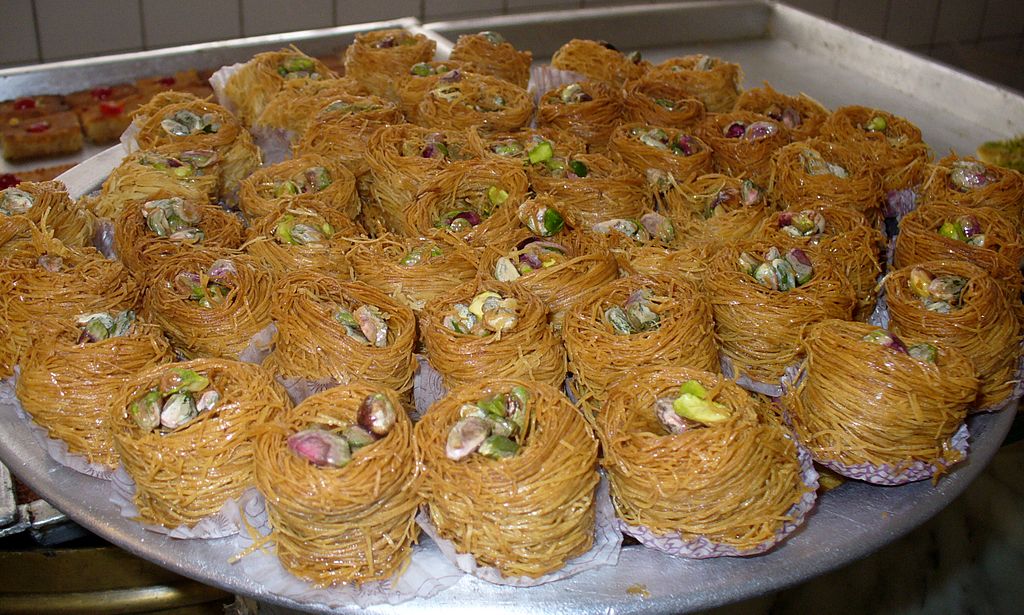
Konafa is a dessert of thin filo pastry strands soaked in syrup and layered with cheese. Yes that’s right, a cheesy desert! There are variations of the dish by region, however, and other ingredients include clotted cream or nuts.
Rozz Me’ammar
Rozz Me’ammar is a traditional Egyptian family dish that is most often served at festivities. It is a very simple baked rice dish that includes butter, milk and cream. The end result is wonderfully fluffy, hearty rice!
Sayadeya
Primarily eaten in coastal regions of Egypt such as Alexandria and Suez, Sayadeya is a white fish dish cooked in an earthenware pot. Sayadeya is marinated in classic Mediterranean spices and sweet caramelized onions, served with rice and a tahini sauce.
Alexandrian Liver
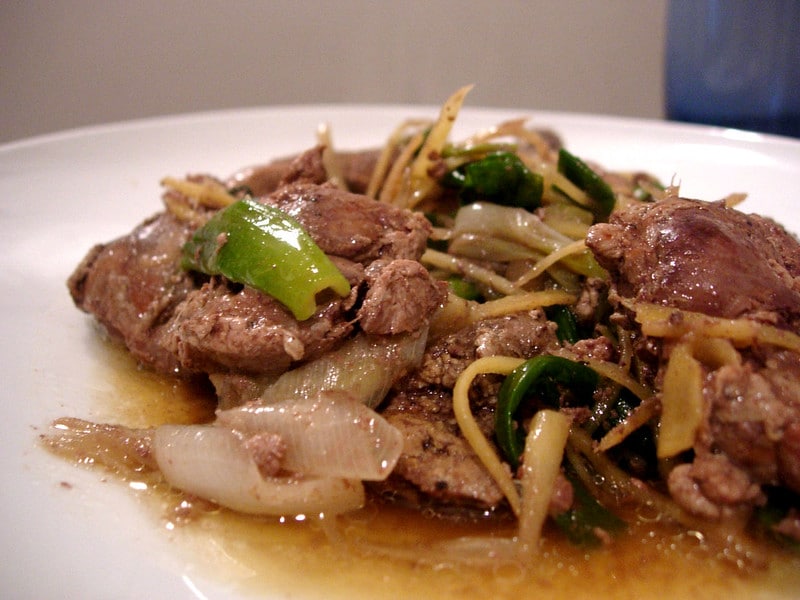
Liver, Alexandrian style, is a dish that is popular throughout Egypt but originates from the Alexandria region. It is quite simply stir-fried liver eaten with chili, lime and warm pita bread.
Molokhiya
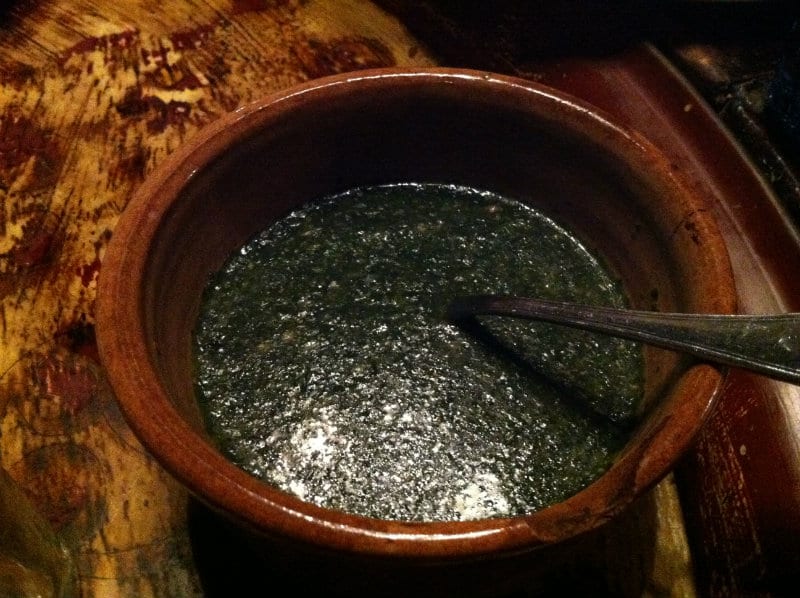
Molokhiya is a hugely popular Middle Eastern soup, rich in vitamins and iron, that is also incredibly hearty. The word Molokhiya comes from a term meaning ‘belonging to the royals’, as it was traditionally a dish that was only served to the pharaohs due to it’s incredible health benefits.
Jute leaves are incredibly nutritious and rich in vitamins A, C, E and K, as well as iron. Thanks the jute leaves, Molokhiya helps to support a healthy heart, healthy bones and a stronger immunity system.
Molokhiya is made using minced jute leaves that are boiled into a thick broth and seasoned with coriander, garlic and stock. It is mostly served with white rice as a vegetarian dish, but is often also served with chicken or rabbit.
It’s also common to serve warm pita bread as a side for dipping into the delicious broth. Whilst the texture of boiled jute leaves is somewhat slimy and rather bitter tasting, the spices bring out a full, hearty flavour.
Kofta
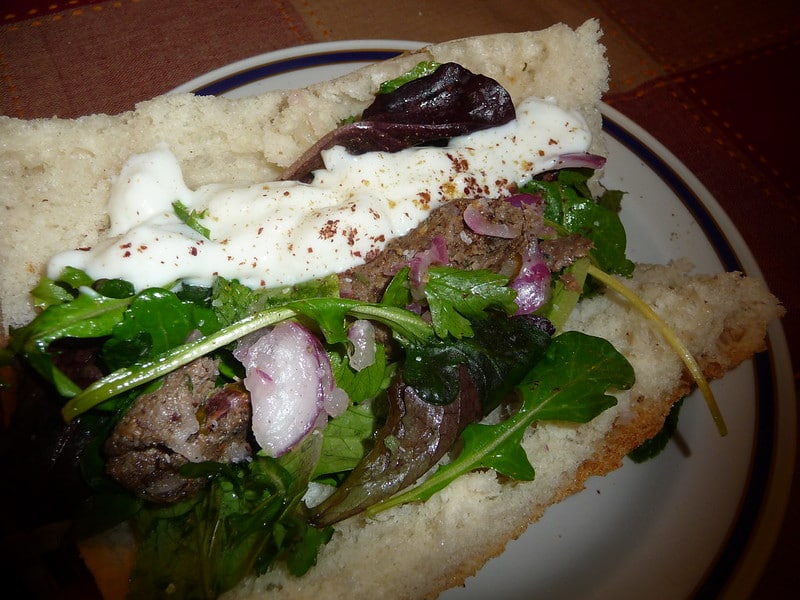
Egyptians are also huge fans of the Middle Eastern classic, Kofta. Typically using ground beef and lamb on skewers before being grilled, Egyptian koftas use garlic, cardamom, cajun and tahini. They are served with pieces of pita and salad.
Feteer Meshaltet
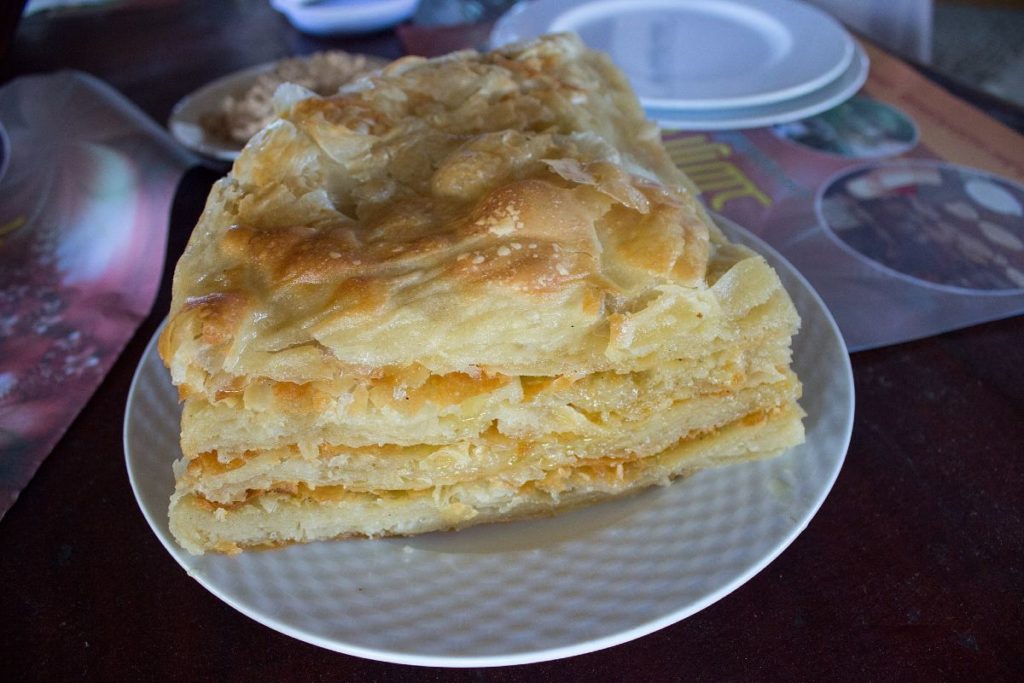
Feteer Meshaltet is a popular layered pastry snack, filled with butter in between the layers.
The dish can either be prepared as sweet or savory and can include such fillings as: cheese, sausages, beef, chocolate and coconut.
Tulumba/Pomba/Bamiyeh/Balaḥ ash-Shām
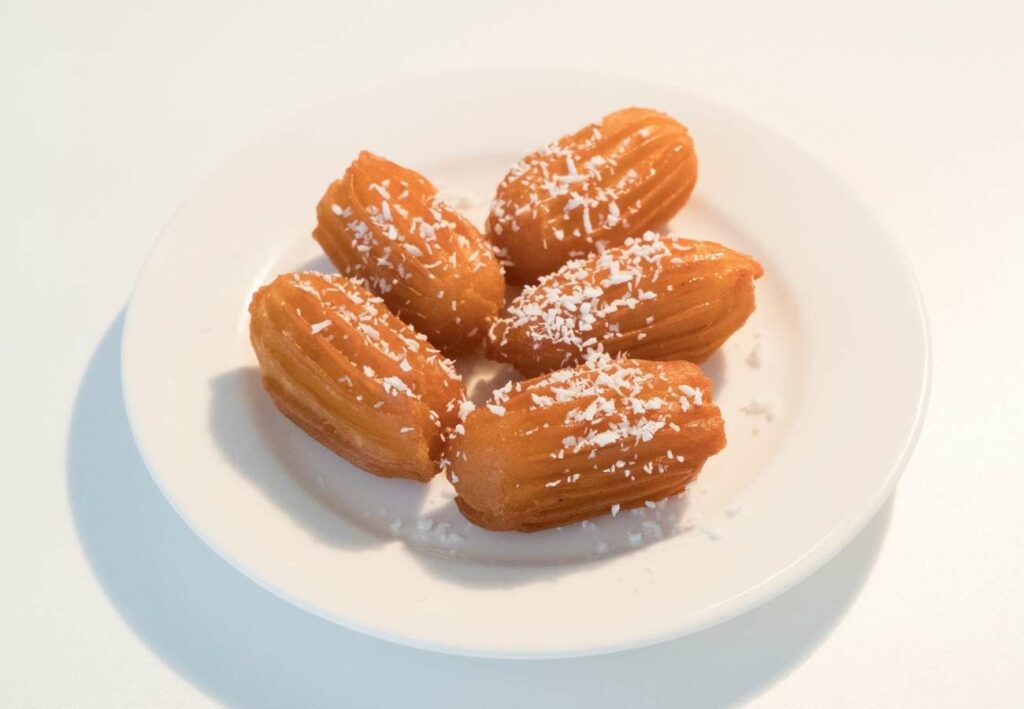
Tulumba, also known as Pomba, Bamiyeh or Balaḥ ash-Shām, is a deep-fried dessert.
It prepared using an unleavened dough lump, which is shaped as a small ovoid and includes ridges lengthways. It is shaped with the help of a pastry bag or cookie press, which has a fitting end part.
Tulumba is initially deep-fried to give this dessert a golden colour, and then sugar-sweet syrup is added on top while it’s still hot.
Qatayef/Katayef
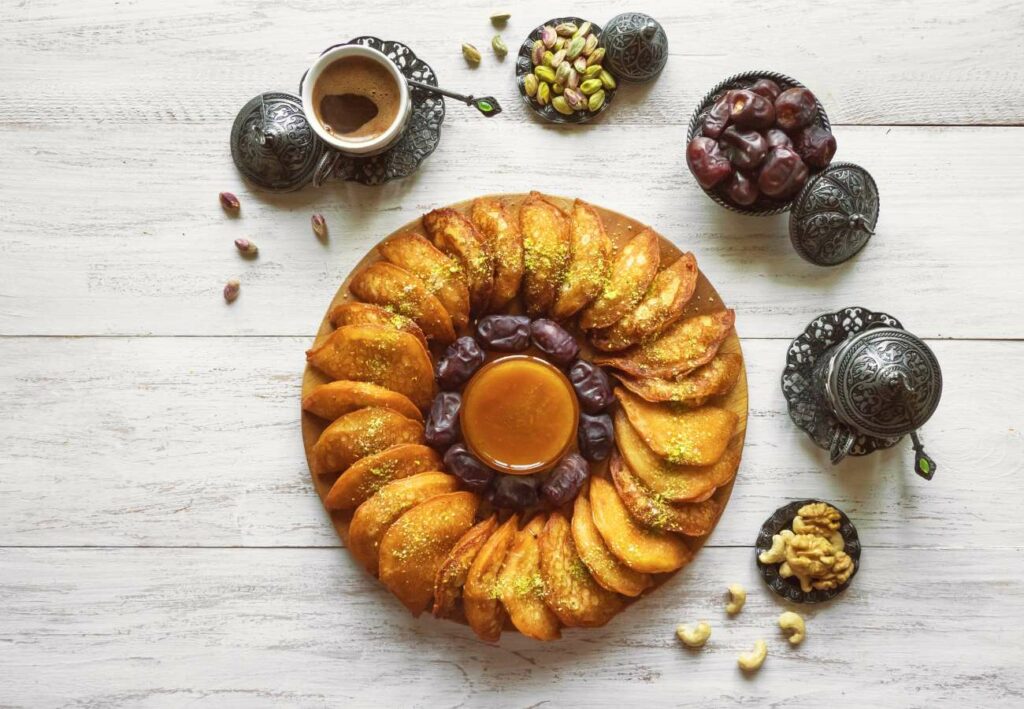
Qatayef is a kind of sweet dumpling that is stuffed with cream or nuts (typically a mixture of hazelnuts, walnuts, almonds, pistachios and raisins). Other ingredients include unsalted cheese, powdered sugar, vanilla extract and cinnamon.
This Arab delicacy is typically consumed during the month of Ramadan. Some people also define it as a folded pancake. It is usually accompanied by a hot, sweet syrup or, occasionally, honey.
Bamia
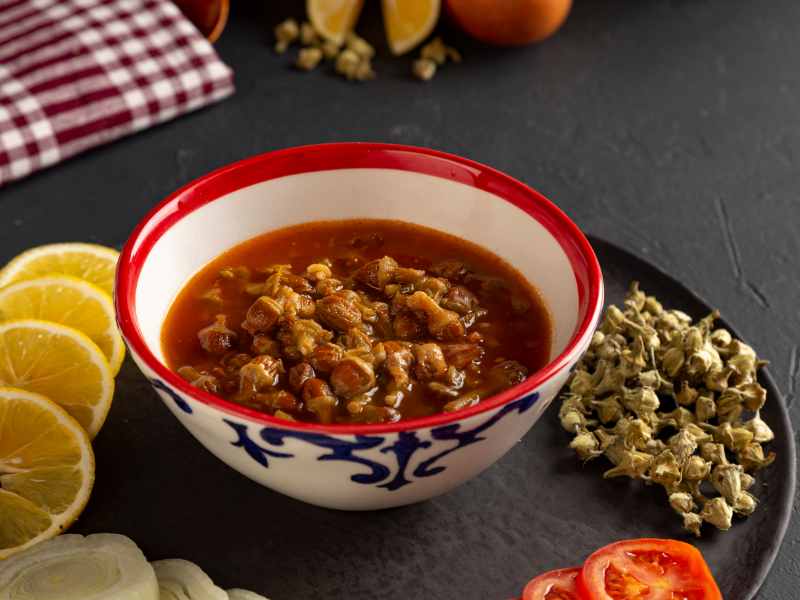
Bamia is an okra and beef stew popular throughout the Middle East. The meat and okra are cooked together with tomato paste, spices, water and pomegranate molasses to name a few of the ingredients. They are stewed in the tomato sauce until the meat becomes tender and the sauce thickens.
Revani
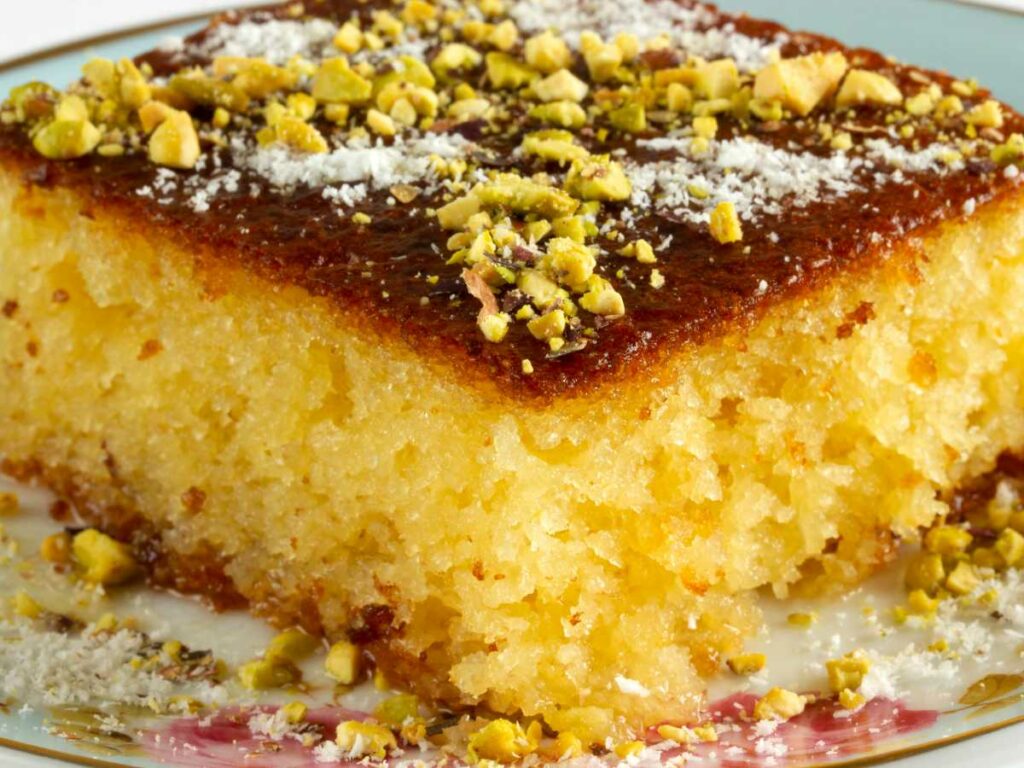
Revani is a traditional cake which is popular throughout the Middle East and Mediterranean. It usually contains, flour, yogurt, eggs, sugar, baking powder and semolina. After baking, the cake is soaked in a light syrup before serving.
Batata Harra
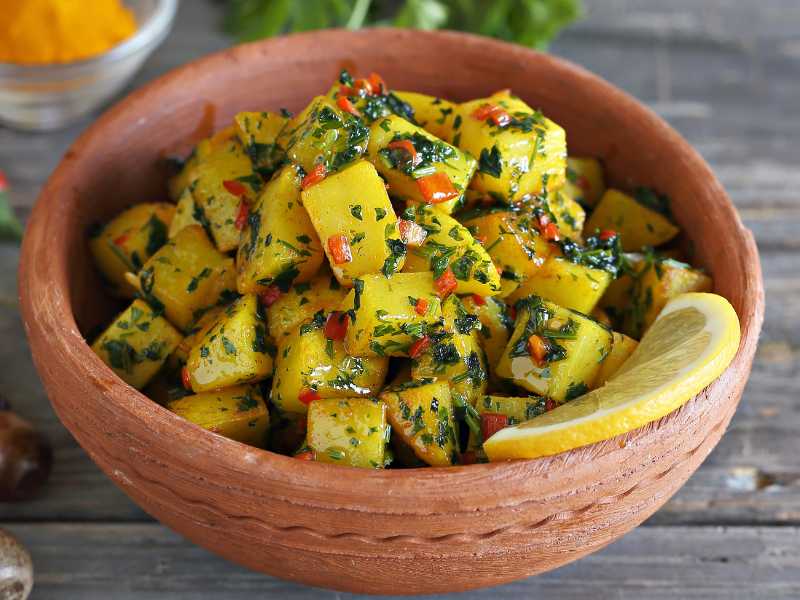
Batata harra is a dish of spiced potatoes enjoyed throughout the Middle East The potatoes are cut into small pieces and roasted or fried then tossed in a sauce before serving. It is usually served as a side for meat dishes.
Hawawshi
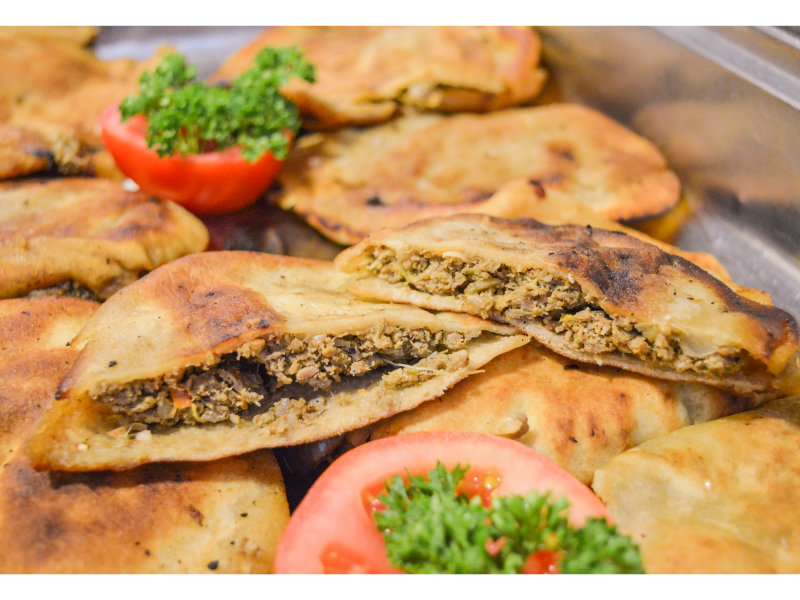
Hawawshi is a dish consisting of ground meat flavored with herbs and spices, served between two layers of golden, crispy pita bread. Traditionally made using a combination of ground beef, onions, peppers, and fresh herbs, Hawawshi is Egypt’s answer to a hamburger.
Basbousa
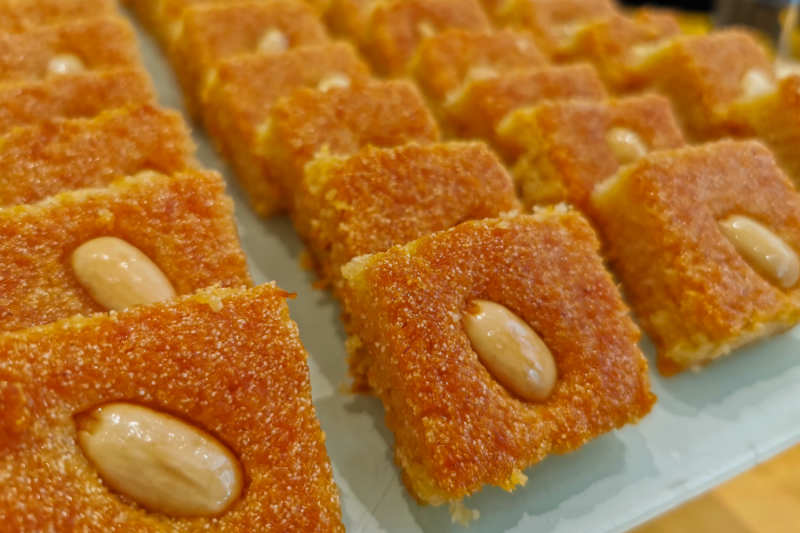
Basbousa is a popular dessert made from semolina that is served in many Middle Eastern and Mediterranean countries. It is infused with syrup and then served with nuts including coconut or almonds.
Fatteh
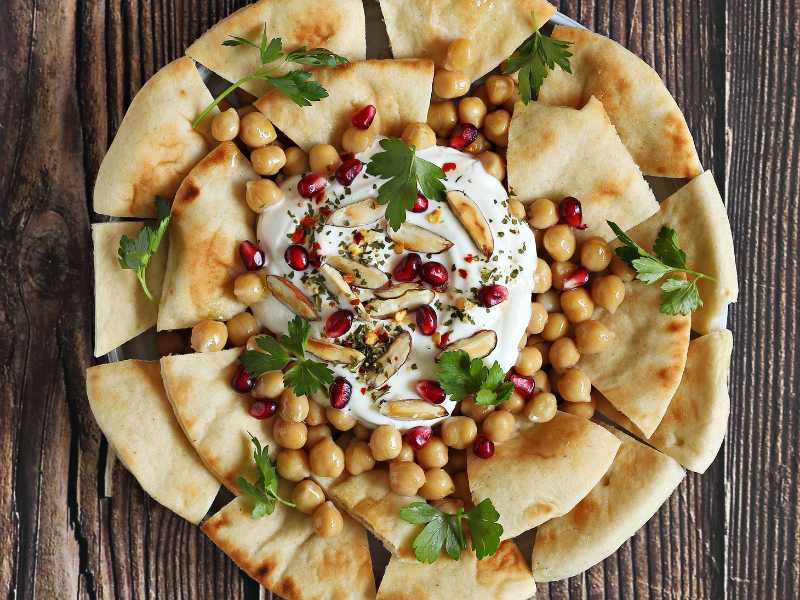
Fatteh is a popular Middle Eastern dish consisting of yogurt, chickpeas, pine nuts and other toppings over flatbread. The flatbread is toasted then topped with generous amounts of spiced chickpeas followed by a layer of plain yogurt, flavored by tahini, lemon juice, garlic and salt.

